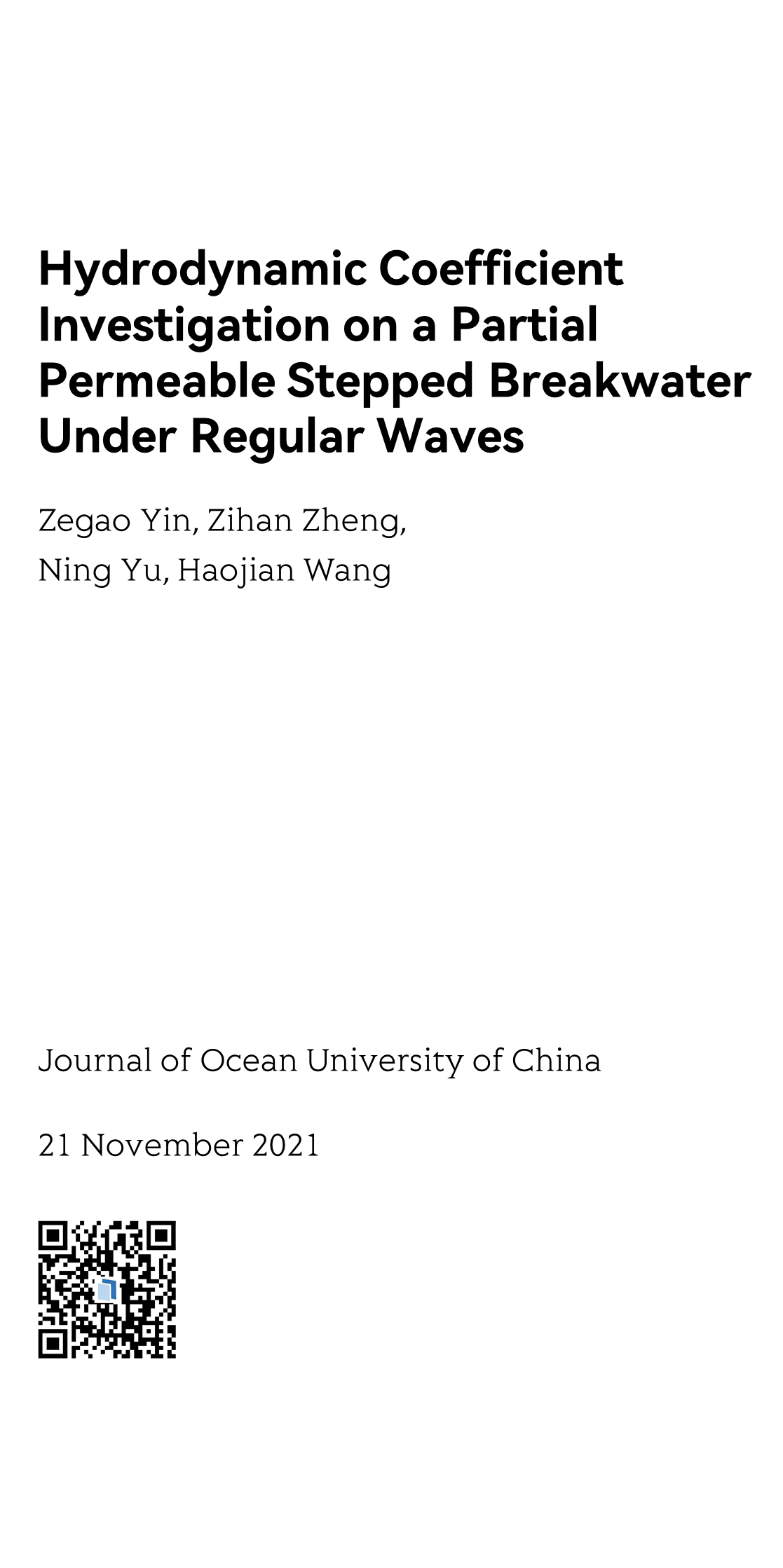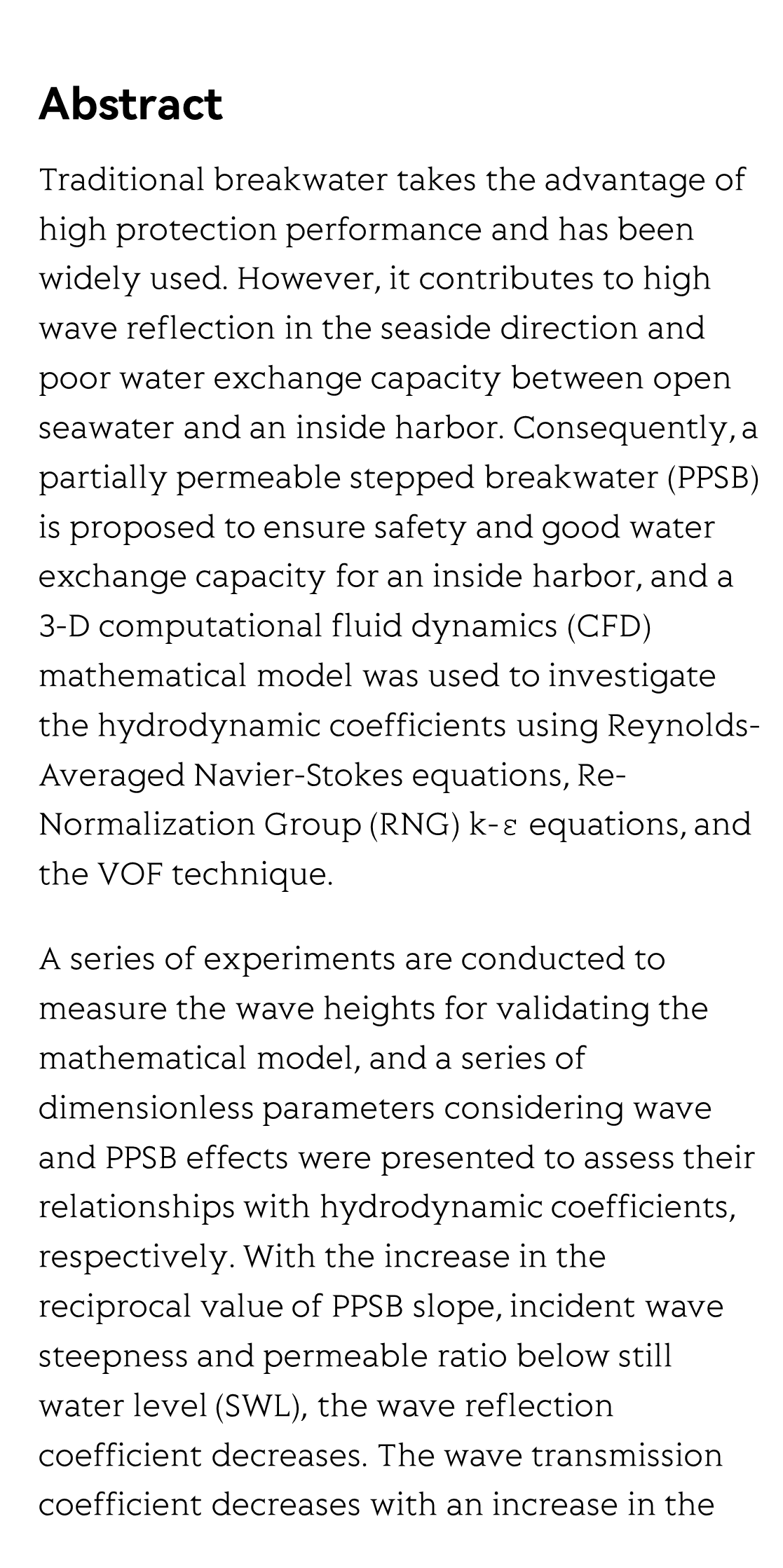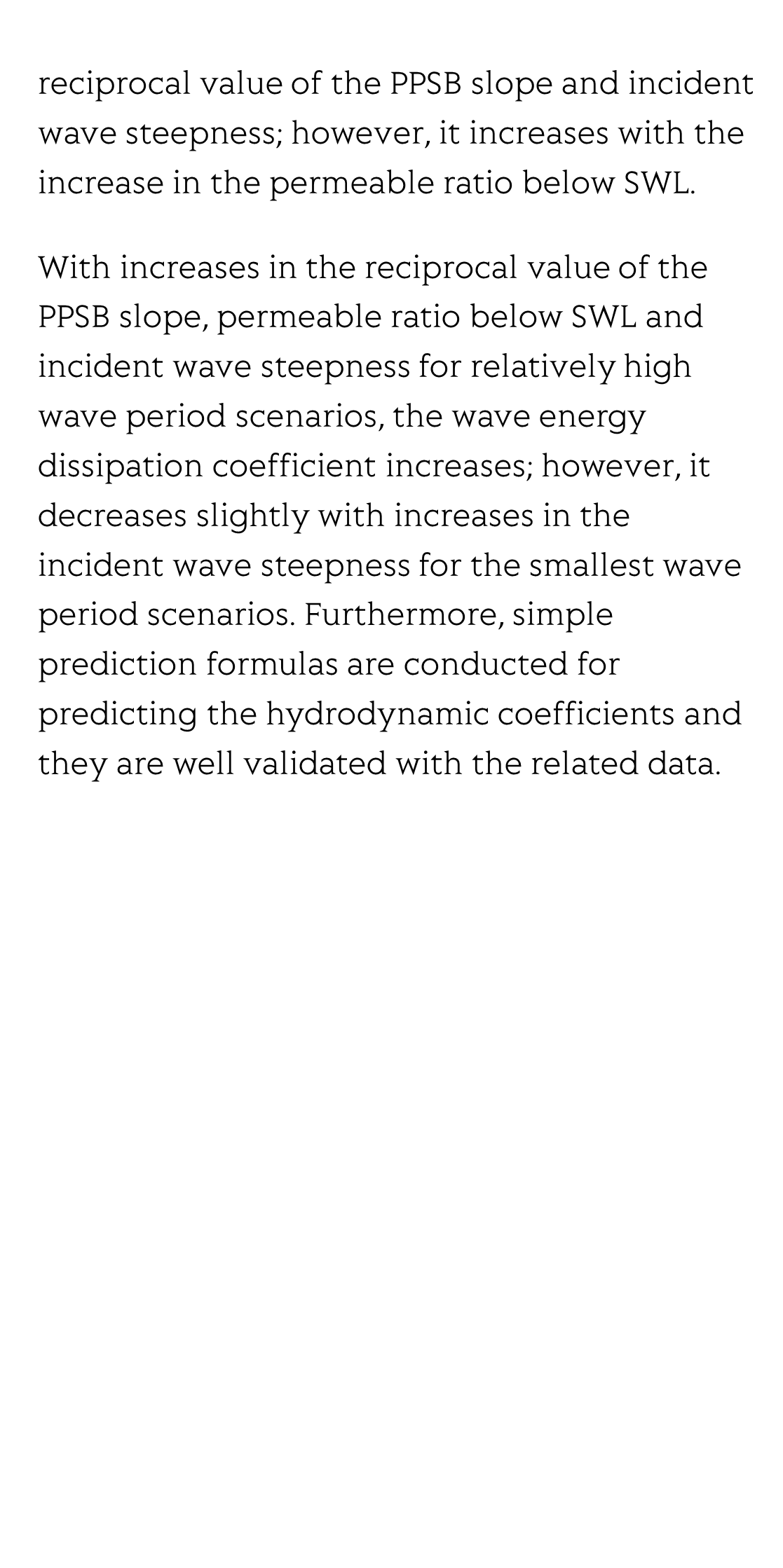(Peer-Reviewed) Hydrodynamic Coefficient Investigation on a Partial Permeable Stepped Breakwater Under Regular Waves
Zegao Yin 尹则高 ¹ ², Zihan Zheng 郑子涵 ¹, Ning Yu 于宁 ¹, Haojian Wang ¹
¹ Engineering College, Ocean University of China, Qingdao, 266100, China
中国 青岛 中国海洋大学工程学院
² Shandong Province Key Laboratory of Ocean Engineering, Ocean University of China, Qingdao, 266100, China
中国 青岛 中国海洋大学山东省海洋工程重点实验室
Abstract
Traditional breakwater takes the advantage of high protection performance and has been widely used. However, it contributes to high wave reflection in the seaside direction and poor water exchange capacity between open seawater and an inside harbor. Consequently, a partially permeable stepped breakwater (PPSB) is proposed to ensure safety and good water exchange capacity for an inside harbor, and a 3-D computational fluid dynamics (CFD) mathematical model was used to investigate the hydrodynamic coefficients using Reynolds-Averaged Navier-Stokes equations, Re-Normalization Group (RNG) k-ε equations, and the VOF technique.
A series of experiments are conducted to measure the wave heights for validating the mathematical model, and a series of dimensionless parameters considering wave and PPSB effects were presented to assess their relationships with hydrodynamic coefficients, respectively. With the increase in the reciprocal value of PPSB slope, incident wave steepness and permeable ratio below still water level (SWL), the wave reflection coefficient decreases. The wave transmission coefficient decreases with an increase in the reciprocal value of the PPSB slope and incident wave steepness; however, it increases with the increase in the permeable ratio below SWL.
With increases in the reciprocal value of the PPSB slope, permeable ratio below SWL and incident wave steepness for relatively high wave period scenarios, the wave energy dissipation coefficient increases; however, it decreases slightly with increases in the incident wave steepness for the smallest wave period scenarios. Furthermore, simple prediction formulas are conducted for predicting the hydrodynamic coefficients and they are well validated with the related data.
Flicker minimization in power-saving displays enabled by measurement of difference in flexoelectric coefficients and displacement-current in positive dielectric anisotropy liquid crystals
Junho Jung, HaYoung Jung, GyuRi Choi, HanByeol Park, Sun-Mi Park, Ki-Sun Kwon, Heui-Seok Jin, Dong-Jin Lee, Hoon Jeong, JeongKi Park, Byeong Koo Kim, Seung Hee Lee, MinSu Kim
Opto-Electronic Advances
2025-09-25
Dual-frequency angular-multiplexed fringe projection profilometry with deep learning: breaking hardware limits for ultra-high-speed 3D imaging
Wenwu Chen, Yifan Liu, Shijie Feng, Wei Yin, Jiaming Qian, Yixuan Li, Hang Zhang, Maciej Trusiak, Malgorzata Kujawinska, Qian Chen, Chao Zuo
Opto-Electronic Advances
2025-09-25





